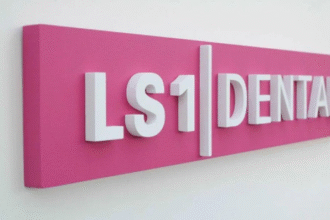The quality of the air we breathe indoors can have a profound impact on our health, comfort, and overall well-being. While many people focus on water filtration or food safety, indoor air often goes overlooked—despite the fact that we spend up to 90% of our time inside. From allergens and pet dander to mold spores and airborne viruses, indoor air can contain a surprising number of invisible contaminants.
This is where the science and technology of air purification comes into play. Whether for homes, offices, schools, or healthcare environments, purifying the air is one of the most effective steps you can take to create a cleaner, safer indoor atmosphere.
In this guide, we’ll explore what air purification is, how it works, the various technologies available, and how to choose the best system for your specific needs.
What Is Air Purification?
Air purification is the process of removing airborne pollutants and contaminants from the air inside a space. These can include:
- Particulate matter: Dust, pollen, mold spores, pet dander, and smoke
- Microorganisms: Bacteria, viruses, and fungi
- Chemical pollutants: Volatile organic compounds (VOCs), fumes, and odors
Air purification systems are designed to reduce or eliminate these pollutants, creating a cleaner and healthier breathing environment.
Why Indoor Air Quality Matters
Poor indoor air quality can cause or worsen a range of health problems, especially for individuals with allergies, asthma, or respiratory conditions. Common symptoms associated with contaminated indoor air include:
- Sneezing and congestion
- Headaches and fatigue
- Eye, nose, and throat irritation
- Increased asthma attacks
- Difficulty concentrating
In more severe cases, long-term exposure to indoor air pollutants can lead to chronic respiratory diseases and even affect cardiovascular health.
Air purification can significantly reduce the presence of these pollutants, contributing to better physical and mental health.
Common Air Pollutants Found Indoors
1. Dust and Pollen
These common allergens enter from outdoors or are stirred up from carpets, furniture, and air ducts.
2. Pet Dander
Microscopic flakes of skin from pets can linger in the air and trigger allergic reactions.
3. Mold Spores
High humidity can cause mold to grow in damp areas like bathrooms and basements, releasing spores into the air.
4. Smoke
Cigarette smoke and cooking fumes contain harmful chemicals and particulates that linger long after the source is gone.
5. Chemical Vapors
Cleaning agents, paints, and furniture can emit VOCs, which are harmful in high concentrations.
6. Microorganisms
Bacteria and viruses can be spread through sneezing, coughing, or even talking, staying airborne for extended periods.
How Air Purification Works
Different air purification systems use a variety of technologies to eliminate or neutralize pollutants. Some systems focus on physical filtration, while others use chemical or biological processes.
Here are the most common methods:
1. HEPA Filtration (High-Efficiency Particulate Air)
- Traps 99.97% of airborne particles as small as 0.3 microns
- Highly effective for dust, pollen, pet dander, and smoke
- Often used in hospitals and cleanrooms
2. Activated Carbon Filters
- Absorbs odors, gases, and VOCs
- Often used in combination with HEPA filters
- Needs regular replacement to stay effective
3. UV-C Light Purification
- Uses ultraviolet light to kill or deactivate bacteria, viruses, and mold
- Doesn’t trap particles, so it’s usually combined with filters
- Common in medical and industrial settings
4. Ionization and Electrostatic Filters
- Releases negative ions to bond with airborne particles, causing them to settle
- Electrostatic filters attract and trap charged particles
- May produce ozone, which should be avoided in high concentrations
5. Photocatalytic Oxidation (PCO)
- Uses UV light and a catalyst to break down pollutants at a molecular level
- Targets VOCs and bacteria
- Still a developing technology, not always effective on its own
Benefits of Air Purification
1. Allergy Relief
By removing allergens like dust, pollen, and dander, air purification systems help reduce allergy symptoms and improve sleep quality.
2. Odor Elimination
Activated carbon filters are particularly effective at absorbing odors from cooking, pets, and smoke, leaving your indoor environment smelling fresher.
3. Improved Respiratory Health
Cleaner air reduces the burden on lungs and may decrease the frequency of asthma attacks and other breathing difficulties.
4. Reduced Airborne Germs
In environments where colds, flu, or other illnesses are common, air purifiers with UV-C or HEPA filters can reduce the risk of transmission.
5. Enhanced Focus and Comfort
Breathing clean air contributes to better cognitive function, focus, and overall comfort—especially in workplaces and educational environments.
Choosing the Right Air Purification System
When selecting a system, it’s essential to consider the specific needs of your environment:
1. Room Size
Choose a system rated for the square footage of the room or space you plan to purify. Undersized units will struggle to keep the air clean.
2. Pollutant Concerns
Do you need to target dust, allergens, smoke, VOCs, or bacteria? Some systems specialize in specific pollutants.
3. Maintenance Requirements
Filters and UV bulbs need regular replacement. Look into the cost and frequency of upkeep.
4. Noise Levels
Some units can be loud, especially on high settings. Quiet models are better for bedrooms or offices.
5. Energy Efficiency
Look for ENERGY STAR-rated models that provide continuous purification without significantly increasing electricity bills.
6. Certifications
Check for third-party testing and certifications, such as AHAM Verified Clean Air Delivery Rate (CADR) ratings.
Standalone vs. Integrated Systems
There are two main types of air purification setups:
Standalone Units
- Portable and plug-in ready
- Ideal for individual rooms or apartments
- Easy to move and replace
Integrated HVAC Systems
- Built into your heating and cooling system
- Provides whole-home or whole-building coverage
- Requires professional installation and maintenance
Each option has its own benefits depending on your budget, building type, and air quality goals.
Common Myths About Air Purification
Myth #1: It’s Only for People with Allergies
Fact: Everyone can benefit from breathing cleaner air, especially in urban areas or enclosed environments.
Myth #2: All Air Purifiers Are the Same
Fact: Technologies vary widely in effectiveness. Always match the system to your needs.
Myth #3: One Purifier Covers the Whole House
Fact: Most portable units are designed for single-room use. Large homes often require multiple units or HVAC integration.
Complementary Practices for Better Air Quality
While air purification is a powerful tool, combining it with other good habits can enhance its effectiveness:
- Vacuum regularly with HEPA-filtered vacuums
- Keep humidity levels between 30–50% to prevent mold growth
- Avoid indoor smoking and limit the use of candles and incense
- Ventilate your space when weather permits
- Use non-toxic cleaning products that emit fewer VOCs
The Future of Indoor Air Quality
With growing awareness of airborne health threats, including seasonal viruses and environmental pollution, the demand for clean indoor air is rising. New developments in smart technology, AI-powered sensors, and integrated filtration systems are making air purification more intelligent, efficient, and accessible than ever before.
Some next-generation systems can automatically detect changes in air quality and adjust settings accordingly. Others integrate with home automation platforms, giving users real-time updates and controls via smartphone apps.
Final Thoughts
Whether you’re looking to improve your health, reduce allergens, or simply create a more comfortable living environment, air purification is a smart and worthwhile investment. With a wide range of technologies and systems available, there’s a solution to suit every home, business, and budget.
By understanding how different systems work and choosing one tailored to your specific needs, you can breathe easier—literally—and enjoy the many benefits of clean, purified air every day.

















